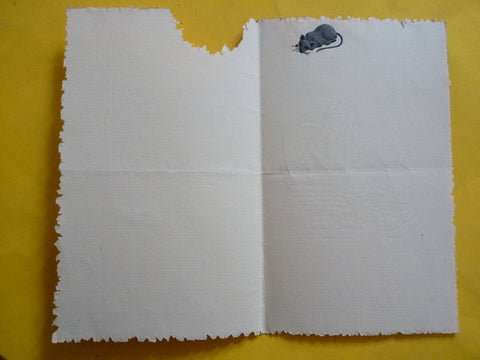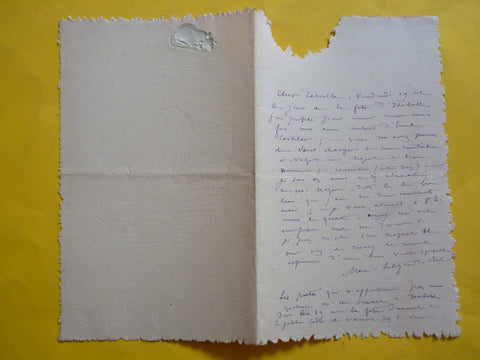
What is YOUR theory about the mysterious little mouse?
Mathias MeyerTo share

One of the first female journalists of her time
Marie-Laetitia Bonaparte-Wyse was a French poet and one of the first female journalists of her time. Born in Ireland, she was actually Napoleon Bonaparte's great-niece! Genetics already announced that Marie would be a woman of strong character. And so it was, educated in Paris, literature and novels were part of her life. Three marriages (and many more lovers) led her to travel around Europe between kingdoms and power struggles. Marie was even persecuted by French authorities for using her famous surname to incite insurrections.
However, something about this unique woman has crossed the centuries, and it wasn't just her poems and romantic and historical adventures. Marie has preserved a very original treasure: a stationery decorated with mouse bites, which has, in its upper part, an illustration of the same little animal. But why would such a vigorous woman have such delicate stationery?
Could it be that one day she bought that particular sheet of paper to write a letter to Victor Hugo, the famous French writer who frequented her mother's salon in Paris? This would have been a poetically fruitful relationship, imagine the literary discussions of this couple? But probably the relationship did not flourish, as the letter she wrote on that sheet is dedicated to Catulle Mendes, a contemporary French poet of Marie.

Uhm, Catulle Mendes, do we smell romance?
Let's face it, neither is mentioned in the other's biography (oops, wikipedia). However, how many things in our lives are not in our online bios (okay, Facebook)? Maybe that's not the meaning of the little mice? A hidden love, lived under the Parisian alleys. Perhaps on one of these platters, while the lovebirds recited poetry and created a new literary current never revealed to the world, a greedy little mouse devoured the evidence of what could have been the great revolution of the 19th century. moment but dispelled the subversive daydreams, Marie illustrated it in the worm-eaten remains of that paper that must have been an important historical record.
The hidden truth behind this beautiful letter remains a mystery. Skeptics say there is always a (more) logical explanation. Marie had 4 children, two of which were adopted, and such a sweet letter could have been a great birthday present to calm the children down and start instilling in them a taste for writing. And so, when the children reached a certain maturity, the paper returned to the mother who decided to use it to dedicate a few words to a friend.

Possibly, we will never know the real reason for this sui generis woman to have an equally unique notepaper. However, a historical character, with a life marked by romances and adventures like Marie, can let our creativity flow freely, because nothing in her life was, indeed, impossible.
And you? What is your opinion about the origin of this stationery? Any other theories? Perhaps a conspiracy to return the Bonapartes to the throne of France? Tell us, let's write this story together!
This article is offered by the Glórias collection, specialist in rare autograph documents . We evaluate, buy and sell letters, manuscripts, books with dedications or drawings of great historical personalities. Click here to learn more
